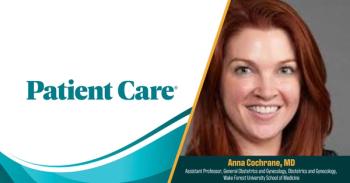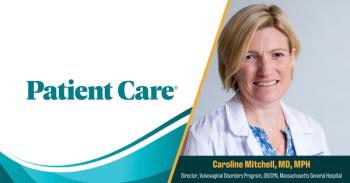
Can Your Practice Become a Patient-Centered Medical Home?

Not only can your practice become a patient-centered medical home, or PCMH -- but would you want it to? And if the answer to both these questions is "yes," how do you go about making the transition?
Not only can your practice become a patient-centered medical home, or PCMH -- but would you want it to? And if the answer to both these questions is "yes," how do you go about making the transition?
Not only can your practice become a patient-centered medical home, or PCMH -- but would you want it to? And if the answer to both these questions is "yes," how do you go about making the transition?
These are the issues that were addressed on Thursday, April 23, by a 4-physician panel in what they billed as a "tutorial on the medical home from several perspectives." The perspectives represented included those of a payer (Donald Liss, MD, of Aetna), a physician in a PCMH practice (Richard J. Baron, MD), and someone involved in the creation of a PCMH demonstration project (Michael Bailit, MD). The moderator of the discussion was Michael S. Barr, MD, MBA.
Although there is as yet no standardized definition of the PCMH, it is generally agreed that qualifying practices embody the following core concepts:
•Team-based care.
•Proactive, planned visits (as opposed to reactive, episodic care).
•Enhanced patient access (eg, through email, expanded hours).
•The use of special software (either a registry or an electronic health record [EHR]) to track patients and the care they need.
•Support for self-management of chronic conditions.
•Patient involvement in decision making.
•Coordination of care across all settings -- especially in transitions.
Although almost any practice can potentially become a PCMH, the presenters noted that realistically, it's usually necessary for at least 60% to 70% of a practice's patients to be covered by a cooperating payer. This is because a number of substantive changes are usually required for a practice to implement the PCMH model (new software, new support staff, sometimes even expanded physical facilities), and to cover these costs, the extra compensation provided by cooperating payers is generally needed on behalf of a sizable majority of the patients in the practice. Often, this means that collaboration among a number of local payers in a multi-stakeholder model is required, as is the case with the Pennsylvania pilot program with which the panel members are all involved (and in which the participation of the various payers has been brokered by the government). In addition to the participation of the majority of local payers, panel members noted that already having an HER in place can be a big help in facilitating the transition to a PCMH.
Is making the transition worth it? Dr. Richard Baron, whose practice, Greenhouse Internists, PC, is involved in the Pennsylvania pilot project, responded with a resounding "yes" -- at least from the perspective of patient and physician satisfaction. He noted that the physicians in his practice love the ability to use email to communicate with patients (as do the patients), they love the open access scheduling, and they are pleased with the increased salaries they now receive. (While much of the enhanced compensation the practice received from payers went for hiring a health educator and more -- and more highly trained -- medical assistants, fully a third was budgeted for increasing physician incomes.)
The bottom line, said Dr. Baron: "We are happier doctors." He noted that under the PCMH model, the physicians in his practice feel that they are more likely to meet patients' needs, more likely to feel they are operating safely and with the information they need, and less likely to have an infinite "to-do" list at the end of the day.
Of course, there are still "bugs" that need to be worked out. Dr. Baron conceded that EHRs and email do have a downside: it is not always clear what is "time off," and work can seem never to end. Also, the physicians in his practice still have progress to make in terms of downloading and delegating those tasks that the enhanced support staff can and should handle.
Finally, it is not yet clear whether the new model will prove to be more cost-effective, as all involved hope it will. The panel members agreed that at least 3 years' worth of data would be needed before that determination could be made; 6 -- or even 12 -- months into the program was simply too early to tell.
Still, the enthusiasm of the 4 panelists for the PCMH model was palpable. This was matched by intense interest on the part of the audience, who at the end of the presentation formed long lines at 2 microphones to ask questions.
Newsletter
Enhance your clinical practice with the Patient Care newsletter, offering the latest evidence-based guidelines, diagnostic insights, and treatment strategies for primary care physicians.


